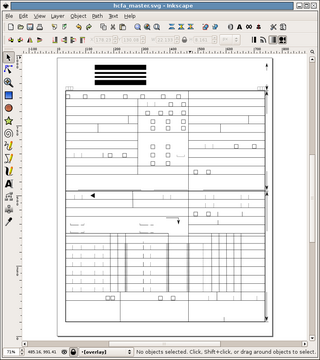Download raw (2.5 KB)
Title: Inkscape + xslt = dynamic workflow Date: 2007-09-08 13:19 Author: nicolas Category: News Tags: Inkscape, Scripting, xslt Slug: inkscape-xslt-dynamic-workflow Status: published [Use Inkscape and XSLT to Create Cross-Platform Reports and Forms,](http://www.linuxjournal.com/article/9283) an article by *Chad Files* on the [Linux Journal website](http://www.linuxjournal.com) that details a workflow to produce dynamic forms and reports for both print and web using *Inkscape* and *Xslt*.  Description of the problem and requirements: > Health-care claims are very intricate (Figure 1). Many boxes and > boilerplate text have to be drawn. The conventional way to do this > with a software application is to draw a series of lines using > coordinates and lengths, and then lay the static and dynamic content > on top of the newly drawn lines. \[...\] <!--more--> > Our requirements were as follows: > > \* We must be able to print high-quality versions of the claims. > \* Claims must be accessible from a Web browser. > \* The solution has to be programming language-independent. We use > Python, PHP, Perl and Java. The images need to be created using any of > these languages. > \* We must be able to convert the claim data and form into several > different file formats, specifically PDF and PNG. > \* The entire solution must be platform-independent. The solution: > Basically, we would take an SVG image of the claim form and make it > into an XSLT (eXtensible Stylesheet Language Transformation), because > the SVG format is a special XML format. Then, we would pull the claim > data from our database and convert it into an XML string. Using any of > our languages, we could then take the XSLT and the XML and create an > SVG image of the claim. This solution met all of our requirements. It > was language- and platform-independent. We could print the SVG images > and embed them into Web pages. Furthermore, SVG images can be > converted into different file formats easily. Another nice feature of > this solution is the small file size of the SVG images. If we wanted > to archive the images, they would take a fraction of the space the old > solution did. Because SVG images are text, not compressed binary, the > files can be compressed and save even more space. [Read the article](http://www.linuxjournal.com/article/9283) for the details of the implementation and test the sample code.